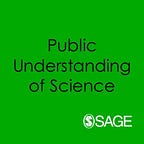Beautiful Experiments — an Illustrated History of Experimental Science
Review by Marianne Achiam
In selecting the beautiful experiments for the book, then, the author illustrates how scientific progress “has not been a steady accumulation of knowledge […], but something altogether more haphazard, contingent, and also more interesting and ingenious”
As a science communication researcher, I was immediately interested in this book when I noticed the title’s juxtaposition of ‘beautiful’ with ‘experiment’. This brought to my mind the historically fluctuating relationship between aestheticism and empiricism, or between the arts and the ‘hard’ sciences. Think, for instance, of the integration of science, art and philosophy in ancient Greece and how it contrasts with the strict separation of scientific method and artistic expression during the Enlightenment.
Even though the author’s mission is not explicitly to engage in this discussion, still, the book appears at a time where the relationship between science and art is once again being discussed and negotiated, specifically in the context of the wicked sustainability problems we face.
Beautiful Experiments includes six chapters based on fundamental questions about the world (How does the world work? What makes things happen? What is the world made from? What is light? What is life? How do organisms behave?), and provides histories of the experiments that offer important insights into these questions. The 60 featured experiments span more than two millennia, from Erastosthenes’ measurement of the Earth’s radius in the third century BC, to the discovery of the Higgs boson in 2012, and thus necessarily represent a brief and eclectic selection.
Beautiful experiments, the author explains, are those that possess persuasive power and clarity, but are not necessarily ‘correct’ by modern standards. In selecting the beautiful experiments for the book, then, the author illustrates how scientific progress “has not been a steady accumulation of knowledge […], but something altogether more haphazard, contingent, and also more interesting and ingenious”.
In this way, Beautiful Experiments reminds us that we cannot think of science in terms of the smooth accumulation of scientific facts. Rather, the book points out, upheavals and paradigm shifts periodically disrupt the accumulation of scientific knowledge, and these upheavals are governed by both social and technical elements of science.
The book includes a number of rich examples of these kinds of social and technical interactions with, and within, science. One of the book’s five interludes discusses how new experimental techniques have not just allowed us to discover phenomena, but in a sense, they have transformed hypothetical objects into real ones, thus creating phenomena. Wolfgang Pauli, for instance, hypothesised the existence of the neutrino in 1930, 25 years before the apparatus was developed to finally observe it.
Our view of the world, the author convincingly argues, has thus been transformed by the invention of new techniques for studying it. But the book also provides intriguing details on the social aspects of scientific knowledge production, for instance, the rather condescending (and not particularly scientific) criticism garnered by Thomas Young, when he presented his theory of light to the Royal Society in 1801, or the bitter feud between Robert Hooke and Isaac Newton in the 1670s. Consensus, rather than ‘objectivity’, has often determined what the scientific community has taken to be true.
This point — the contingent nature of science — can be a source of some discomfort to science communicators these days, where science scepticism is at the same time a necessary and healthy expression of critical thought and a symptom of the relativist discourse promoted by anti-vaxxers and science deniers on national and even international stages. I commend Philip Ball for explicitly illustrating the institutional, social, technical and cultural nature of scientific knowledge construction, rather trying to gloss over it.
The book includes numerous detailed and beautiful photos, illustrations and paintings of scientific apparatus, experimental setups, and the women and men who engaged with them. In particular, I found the images of historical apparatus compelling for the ‘presence effects’ (Söderqvist et al., 2009) of this apparatus, that is, its macroscopic, visible, material, and recognisable qualities, which contrast so strongly with contemporary laboratory equipment.
Many of the historical illustrations place the experimenter on the scene of the experiment, either in full figure or in the form of a hand manipulating the apparatus. To me, this narrative and personalised approach is a refreshing variation on the abstract and formalised depictions of experiments that characterise more modern images of science.
This book presents readers with a visually captivating journey through the annals of scientific experimentation and knowledge creation, generously imparting Ball’s profound fascination with science and experimental methodology. For me, it served not only as a historical narrative but also as a catalyst, prompting reflections on the dynamic interplay between science and society throughout history.
The book compellingly challenges the notion of science’s implicit neutrality, urging both the scientific community and its protagonists to acknowledge and embrace a more explicit subjectivity in their pursuits. Beautiful Experiments thus goes beyond a historical account, encouraging readers to contemplate the profound influence of science on society and, reciprocally, society on science.
Reference
Söderqvist, T., Bencard, A., & Mordhorst, C. (2009). Between meaning culture and presence effects: contemporary biomedical objects as a challenge to museums. Studies in History and Philosophy of Science, Part A, 40(4), 431–438. https://doi.org/10.1016/j.shpsa.2009.10.010
Marianne Achiam is associate professor in the Department of Science Education, University of Copenhagen, Denmark, with a particular research interest in how scientists’ science is transformed into science for dissemination in natural history museums, science centres, and other institutions. Her recent publications include, as co-editor, Addressing Wicked Problems through Science Education — the role of out-of-school experiences (Routledge, 2021).
